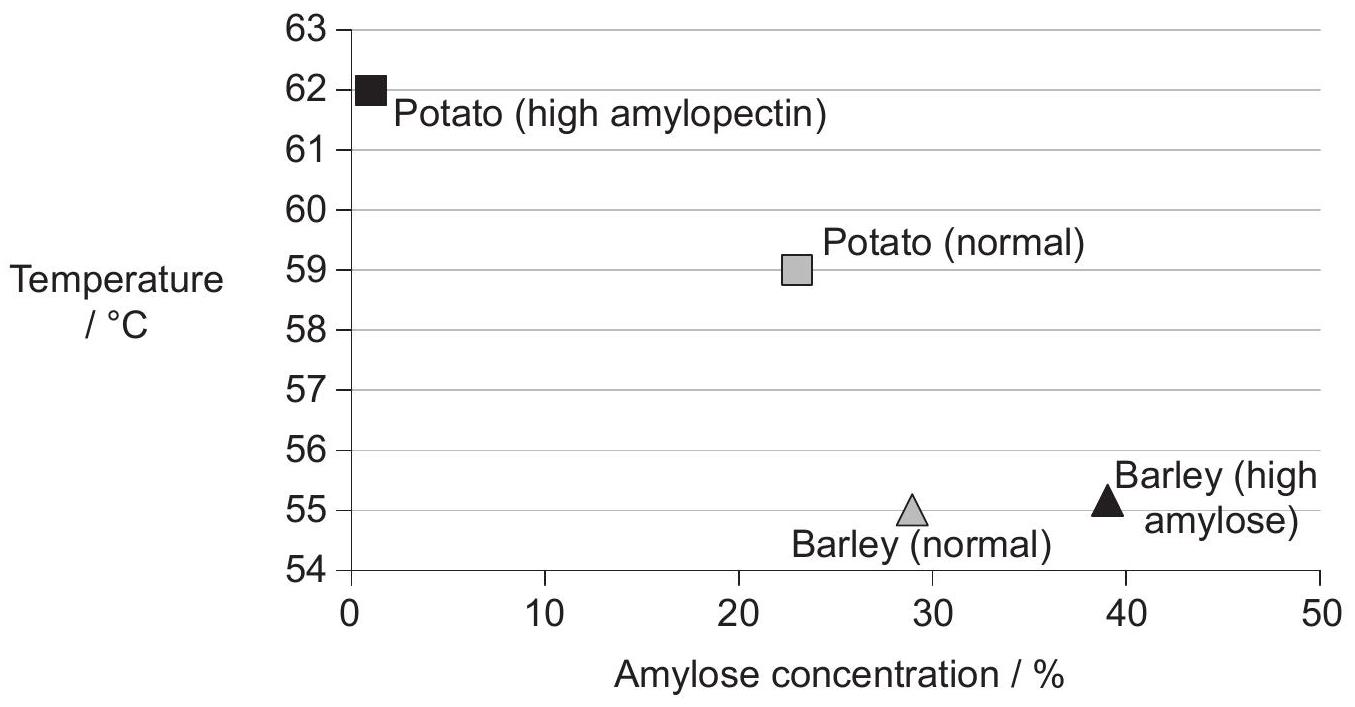Starch from different sources contains differing proportions of amylose and amylopectin. Potatoes (Solanum tuberosum) have been genetically modified to produce high-amylopectin starch (Amflora potatoes). Heat induces starch to form a gel in excess water. The graph shows gel formation temperature at different amylose concentrations. 
Discuss the hypothesis that the temperature at which starches form a gel depends on the degree of cross-linking of amylopectin.
a. high amylopectin potatoes/low amylose need more heat to form gel «so hypothesis supported» ✔ b. «normal» potato and normal barley have similar amylose concentration but different gel formation temperatures «so hypothesis not supported» ✔ c. normal barley and high amylose barley have same gel formation temperature «so hypothesis not supported» ✔
State one advantage of potatoes with a high amylopectin content.
a. «high amylopectin potato starch is» used in paper production because it forms a clearer film «when forming a gel» b. «high amylopectin potato starch is» used in adhesive production as it forms a stickier paste ✔ c. «high amylopectin potato starch is» used in paper/adhesive production because there is less thickening of starch film/paste during storage compared to regular potato starch ✔
The Amflora potato was approved for industrial applications in the European Union (EU) in 2010 and was withdrawn in January 2012 due to opposition. Discuss reasons for people supporting or opposing the introduction of the Amflora potato in the EU.
supporting: a. potatoes cheap to grow ✔ b. benefits farmers/local producers «so less pollution» ✔ c. reduces costs in «paper» industry ✔ d. beneficial uses in industry ✔ opposing: e. perceived health risks/allergens ✔ f. may cross pollinate with existing species ✔ g. could be eaten accidentally ✔

